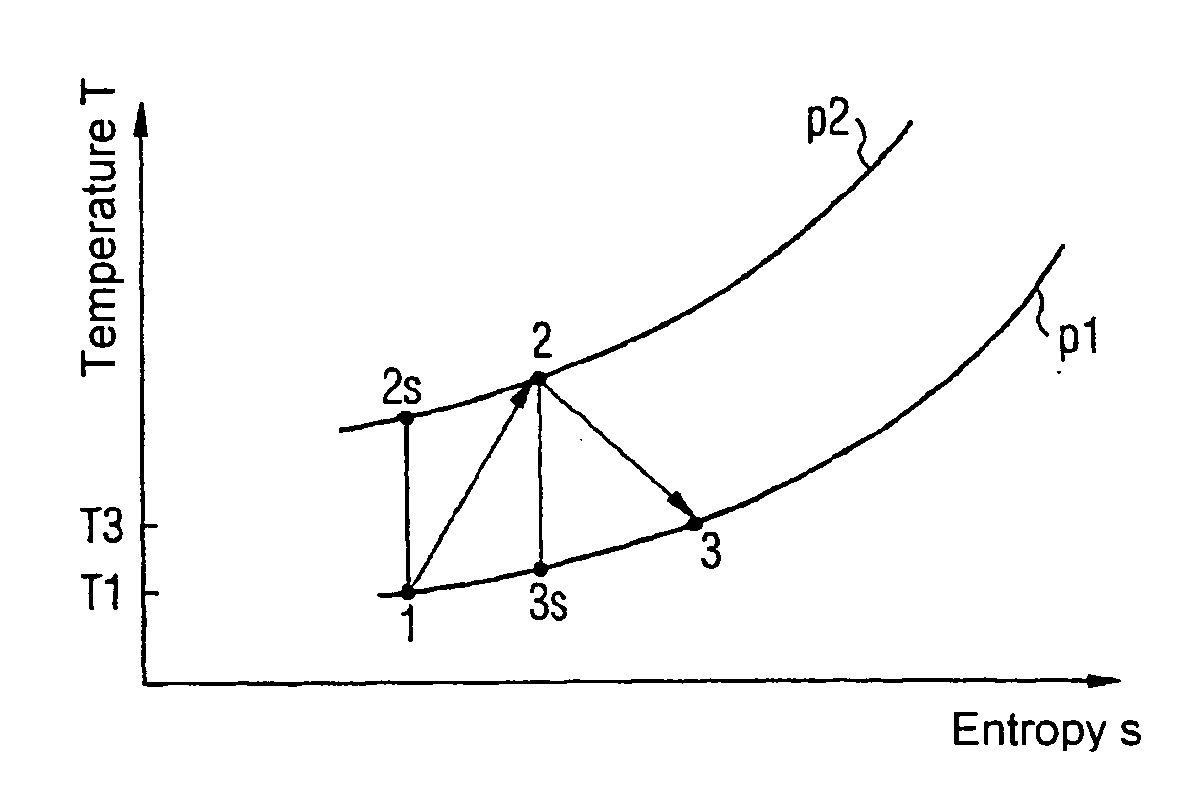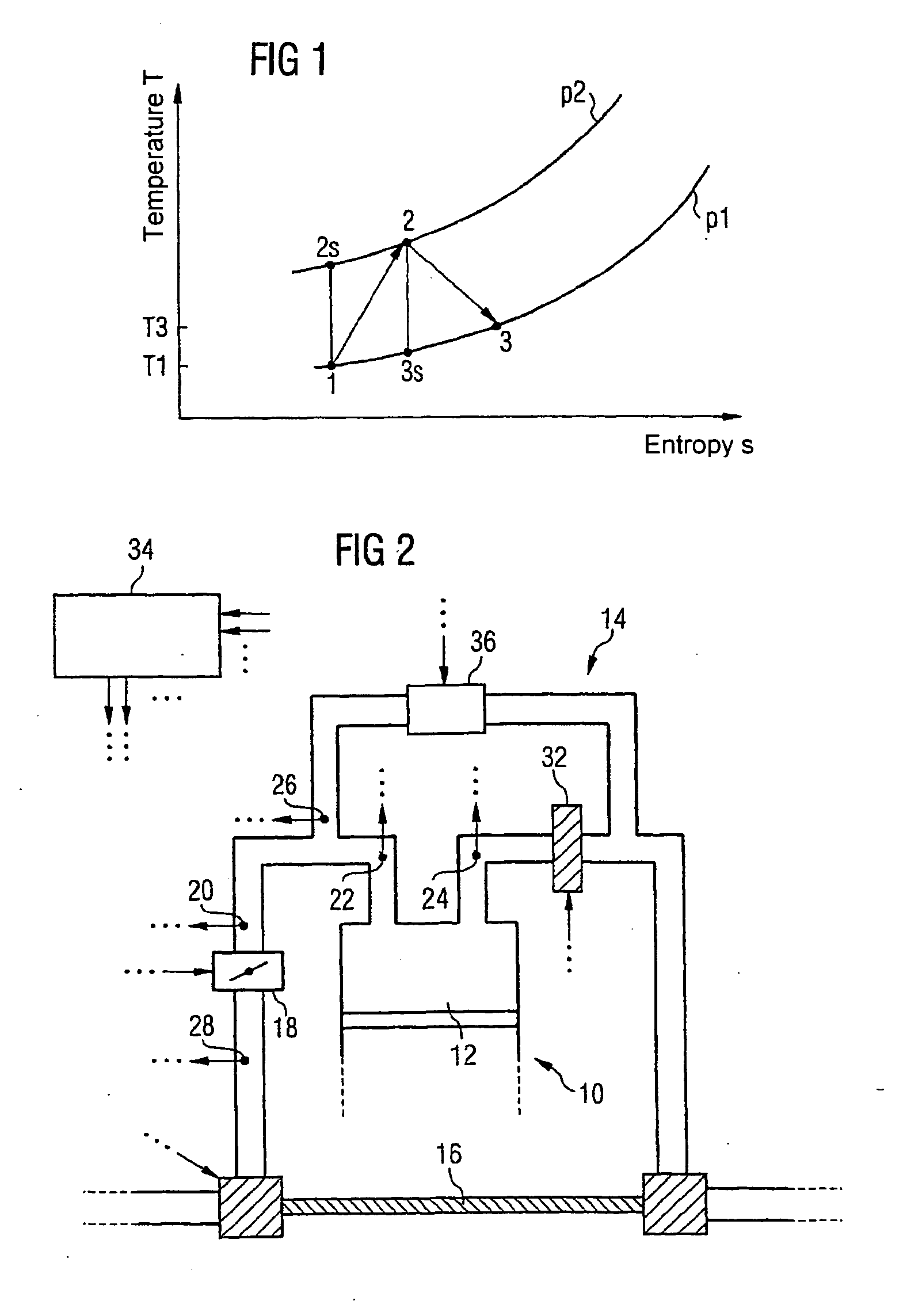System and method for influencing the induction gas temperature in the combustion chamber of an internal combustion engine
- Summary
- Abstract
- Description
- Claims
- Application Information
AI Technical Summary
Benefits of technology
Problems solved by technology
Method used
Image
Examples
Embodiment Construction
[0062]FIG. 1 shows a temperature-entropy diagram to explain the basic thermodynamic principles of a preferred embodiment of the present invention. The diagram shows the temperature-entropy graphs in a gas for two different pressures p1 and p2. If a gas is compressed, starting from a pressure p1 and temperature T1, to the pressure p2, this process does not run along an isentrope (process 1-2s), but under entropy increase (process 1-2). If an expansion occurs after the compression, meaning that the pressure falls, this does not occur along an isentrope (process 2-3s), but likewise under an increase of entropy (process 2-3). The processes for increasing pressure from p1 to p2 shown here and the subsequent expansion to the output level p1 represent a special case. An expansion to any other pressure level also occurs under an increase in entropy. Finally the gas, after compression from of p1 to p2 and expansion from p2 to p1, has a higher temperature level than before the compression; Th...
PUM
 Login to View More
Login to View More Abstract
Description
Claims
Application Information
 Login to View More
Login to View More - R&D
- Intellectual Property
- Life Sciences
- Materials
- Tech Scout
- Unparalleled Data Quality
- Higher Quality Content
- 60% Fewer Hallucinations
Browse by: Latest US Patents, China's latest patents, Technical Efficacy Thesaurus, Application Domain, Technology Topic, Popular Technical Reports.
© 2025 PatSnap. All rights reserved.Legal|Privacy policy|Modern Slavery Act Transparency Statement|Sitemap|About US| Contact US: help@patsnap.com



